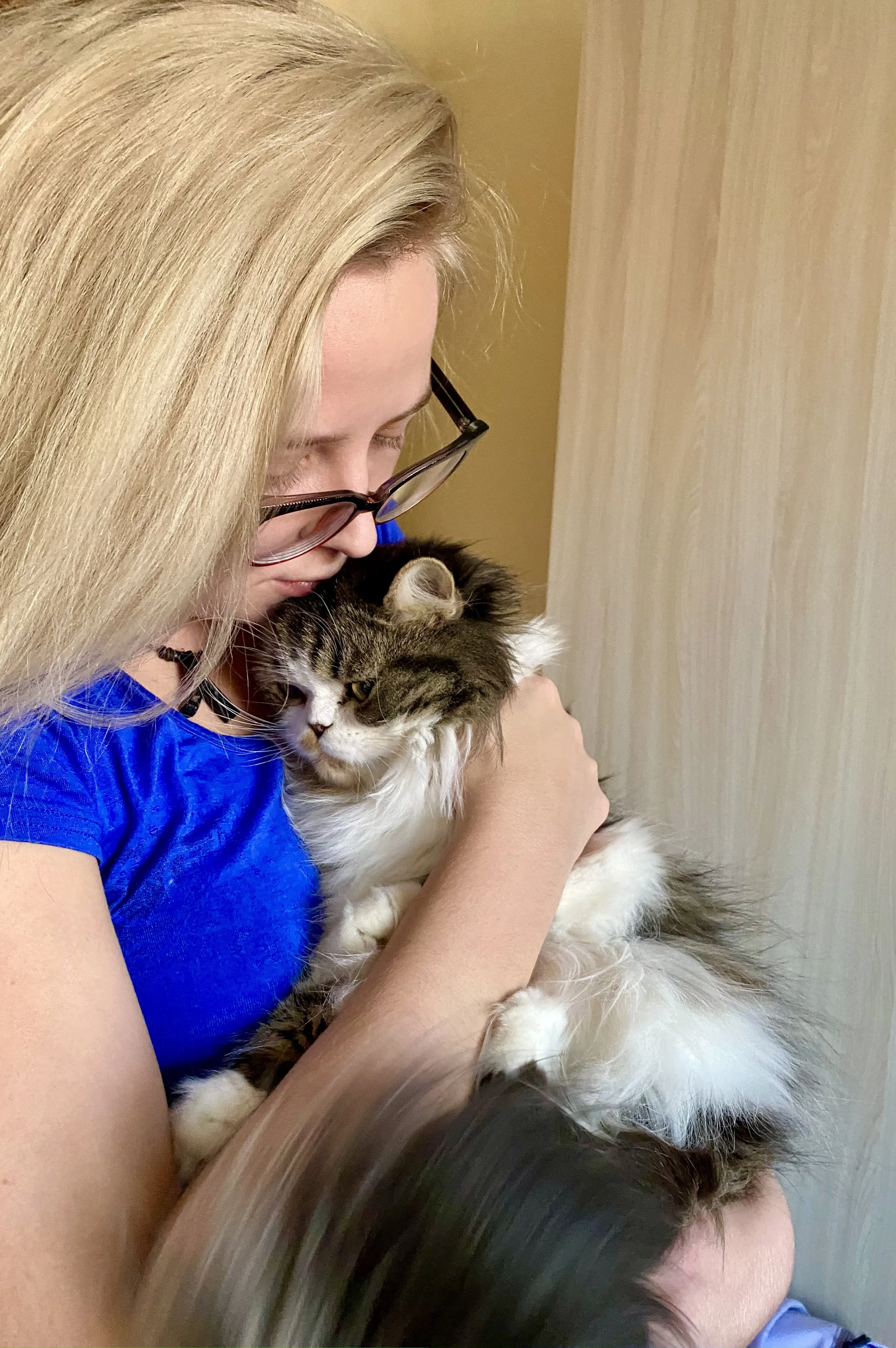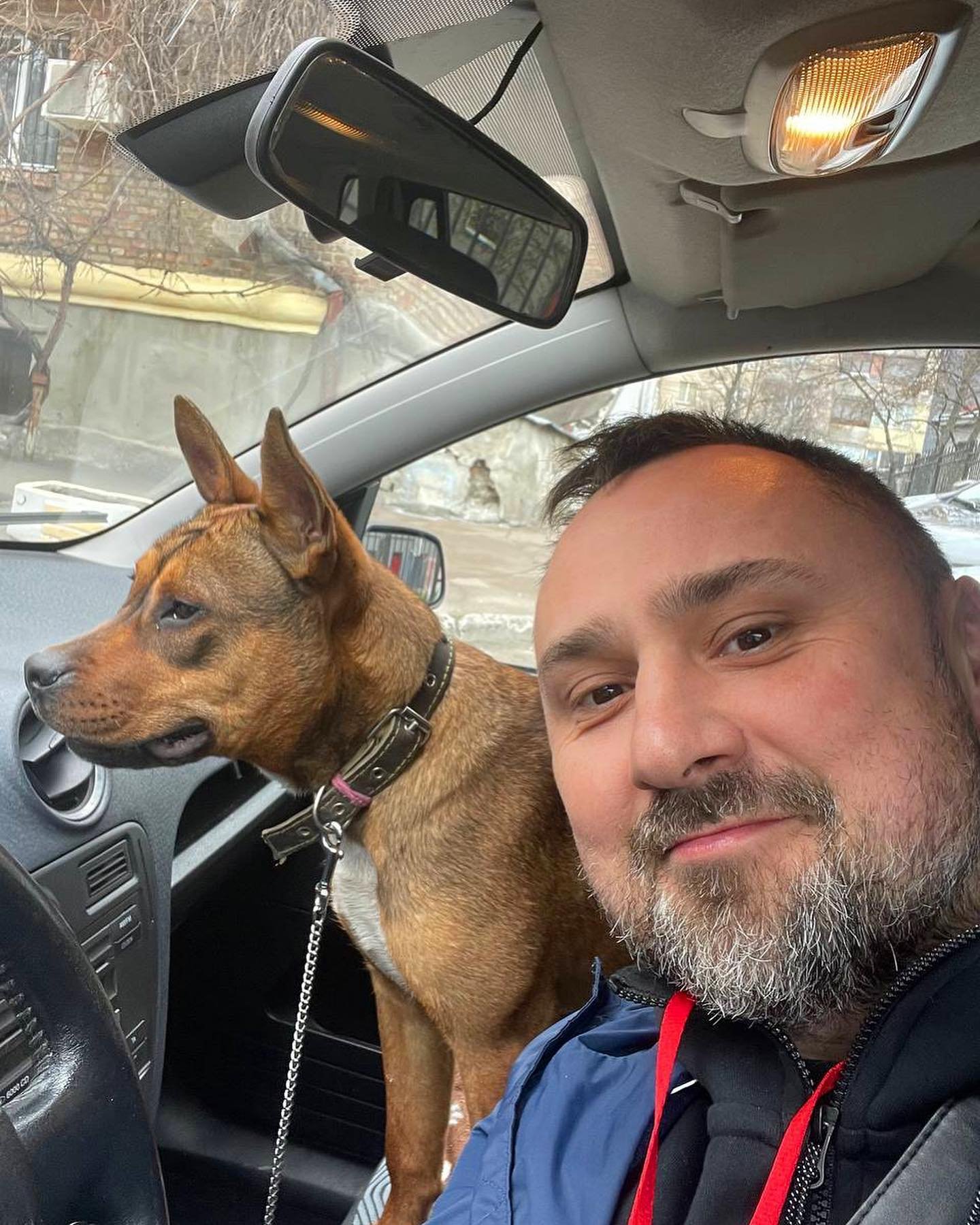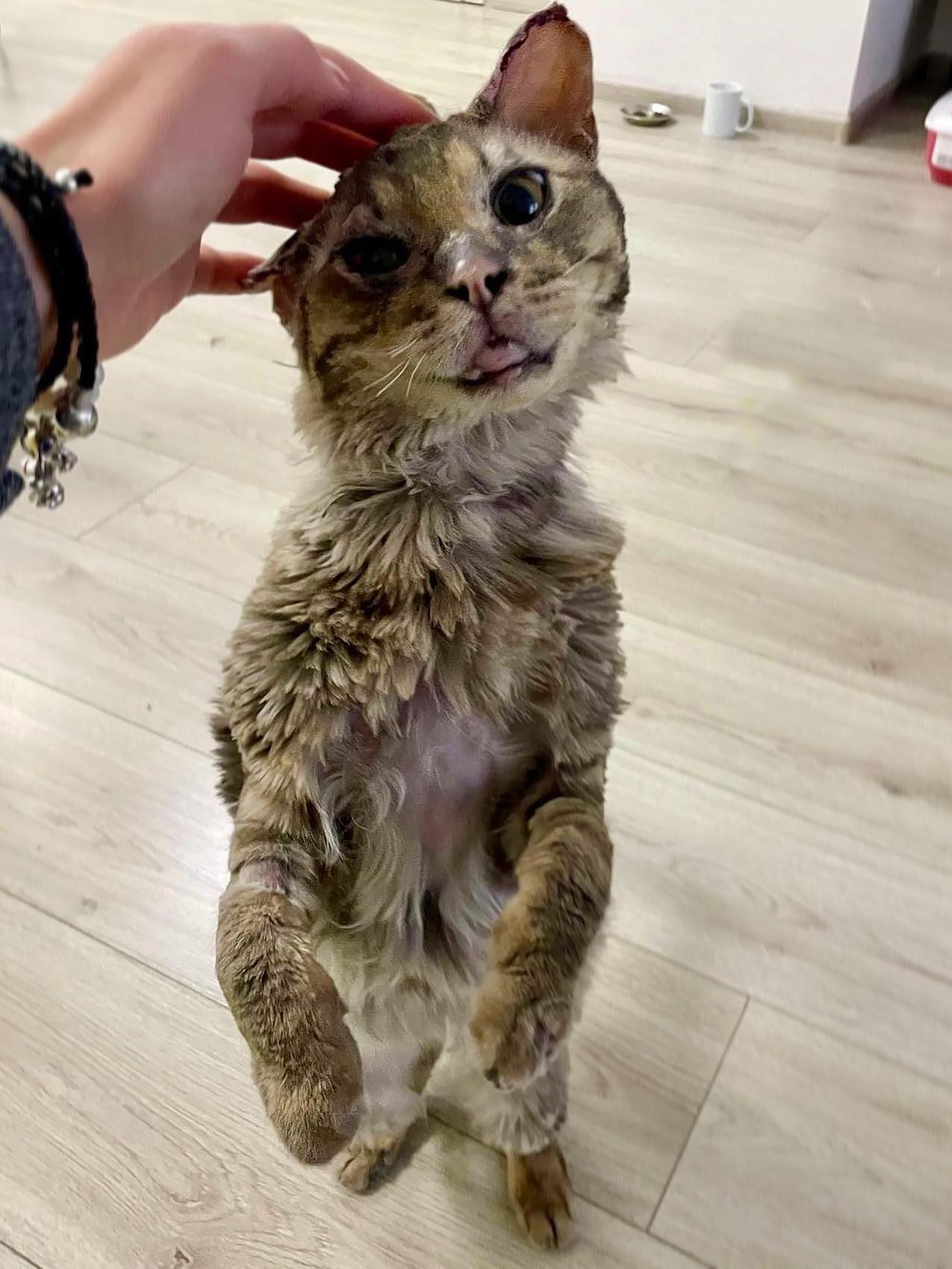How to save pets from war
Hungry, frightened and wounded cats and dogs wandering among the ruins of their former homes. Animals are forced to survive under shelling or run away from fires. Others, like prisoners without food and water, are waiting to be rescued in locked apartments. Sonia Sadovska and Dymtro Revnik had to do something. But how do you save animals in the midst of an ongoing war?
Before the war, Sonia Sadovska and Dmytro Revniuk worked in the film industry. However, they decided to leave their prestigious jobs and dedicate themselves to a project that, as it turns out, has already helped to save hundreds of cats and dogs: The ZooPatrol. “The initiative started by chance”, says Sonia, who co-founded the non-government organization together with Dmytro. Friends asked them to pick up a cat that was locked alone at home. Photos of the rescued animal were posted on social media. Sonia was shocked by the number of messages that were immediately received: "We had no idea it was so dramatic. We thought about getting together for two weeks, just to help friends, and that's it. But in the first two weeks of the war, we received more than 800 requests about locked or injured pets”.
About 80 volunteers have already joined the initiative. For the promotion of their project, they focus on Instagram and Facebook, created a Google Form, and even released their own merch. The team has 24 patrols, who search and rescue animals in the Kyiv region, particularly Bucha, Irpin, Borodyanka and other cities that suffered most during the Russian occupation. Dmytro says that volunteers often have to risk their own lives when working in areas that have not been demined yet: "On one of the missions, we saw a dog tied to a tree and began approaching him. Suddenly we heard a scream: "Where are you going!" A sapper* was running towards us. It turns out that the territory was still not demined. And the occupiers often tied animals and hid explosive objects nearby so that the Ukrainian military would step on mines when they tried to free the animal. Sappers knew about it but we did not. Nonetheless, the dog was saved”.
*Sapper (or combat engineer) is a soldier who performs a variety of military engineering duties, such as breaching fortifications, demolitions, bridge-building, laying or clearing minefields, preparing field defences.
Animals that became symbols of war
Cats and dogs were pulled out from under the rubble, from destroyed military machines, or rescued after fires. Photos of the cat named Feniks (Phoenix) from Andriivka (a village in the Kyiv region) are known worldwide. But, as it turned out, the burnt animal was only photographed and left on the street. It took a few days for volunteers to find Feniks again. Now the cat has successfully completed his treatment and lives with his rescuer.
Ukrainian Emergency Workers with special equipment even joined a rescue operation, when a kitty on the 7th floor of a destroyed high-rise building in Borodyanka was spotted by a photo correspondent. She had been staying there for more than two months without water and food. Followers of the project on social media decided to name the rescued kitty “Shafa”. That’s in honour of the Ukrainian kitchen cupboard* (in Ukrainian it’s spelt “Shafa”), which wasn’t ruined after the bomb explosion. Shafa has become a symbol of the invincibility of the Ukrainian spirit, with people even launching an Instagram page for the cat. Thankfully, she is safe and healthy.
*The kitchen cupboard: a shelf in one of the houses in Borodyanka (Kyiv region) that hasn't been ruined after the bomb explosion, despite serious destruction around. A lot of memes have been created about this cupboard. It has become one of the symbols of Ukrainian resilience during periods of the unstable military situation.
Imprisoned in their own home
Old man with cat, photo from instagram /zoopatrul.ua/
Although most people fleeing the war try to take their pets with them at all costs, there are cases when they get locked in apartments. In these circumstances, the volunteers provide a special operation to release pets. With the permission of the owner, a small hole is drilled into the door or wall, through which food and water are poured for the animal. Then, if it’s impossible to get the keys, a hole is drilled in the door or the wall next to it so that the animal can leave the apartment. The third way is to break the door or the lock itself. “There are owners who said they have strong doors and allowed our patrols to break through the perimeter, get out the pet and then just fix the door. But there were also some people who did not allow us to cause damage at all. Some said: “If we pour water, the parquet will deteriorate”, says Sonia. They seemed to worry more about renovation than about the life of their animals.
Unfortunately, at least two cats, a rat and a parrot died in their homes from stress or dehydration. However, in total, ZooPatrol has already managed to save more than 500 animals - only in the Kyiv region. Most of them were returned to their owners and about 150 abandoned animals have already been adopted by new families. According to Sonia, they have several rounds of interviews with people who want to take the pets, then they call new owners again, and ask about the situation: “It is important for us to make sure that when they take them, they will not leave them as the previous owners did”.
Taking on new life
All volunteers work for free. ZooPatrol pays for fuel and animal feed with its own budget and donations. Most of the money, however, goes into treatment. Currently, there are about 200 cats and dogs in clinics. Daily therapy costs approx. UAH 70 000 (more than EUR 2 200). So the volunteers decided to open their own veterinary clinic in Kyiv with all the necessary equipment, where they treat the rescued animals for free. A month from now, another one will open. Moreover, volunteers take care of animals that need special conditions, says Dmytro: “We have 6 disabled dogs who will need constant rehabilitation for the rest of their lives. The maintenance of one dog costs UAH 6 500 (about EUR 200) per week. We are looking for sponsors for them and try to place them in families, even abroad, who can financially provide proper rehabilitation for the animal".
In ZooPatrol, they believe that saving animals is only the first stage. Next, it is necessary to carry out a comprehensive reform at the state level. Attempting to learn about successful foreign experiences, they even visited in person the largest state animal shelter in Berlin (Germany) and a private shelter in Brno (Czech Republic) hoping to gather ideas they could implement in Ukraine later. “Shelters in Ukraine were like concentration camps for animals”, notes Sonia. “Their owners tried to keep as many animals as possible and collect grants around the world. The money was spent on all the people who work there. And the animals were essentially imprisoned for life because no one was involved in the adoption. We decided not to return to the film industry until we resolve this issue”.
And this process is already underway. Co-founders of the ZooPatrol have signed a memorandum with the mayor of Irpin to arrange a shelter for 150 large modern enclosures and even the construction of an infectious disease department for cats with an immunodeficiency virus there. The same number of new animal boxes are planned to be built in the new shelter in Kyiv. Now they are looking for additional investors. Despite all the horrors and pain, ZooPatrol proved that the war made it possible to shine a light on the dark spots of this system and even start a complex reform in Ukraine to improve the lives of animals.








